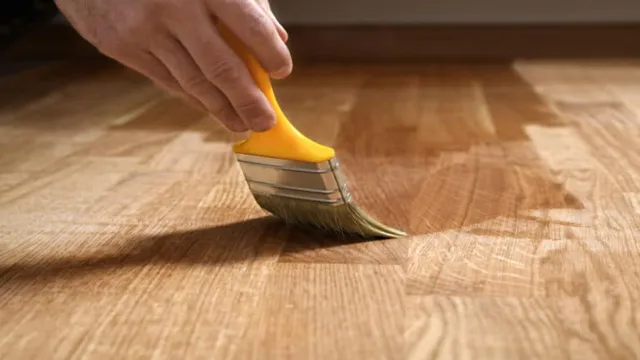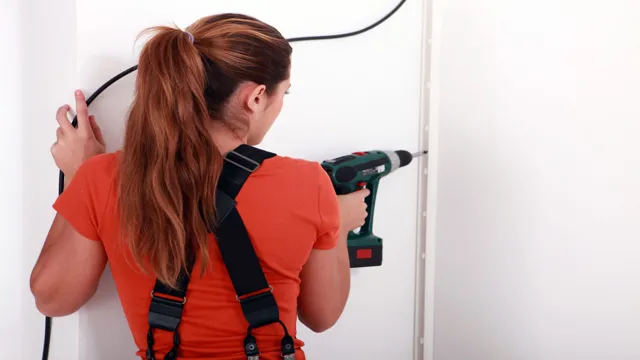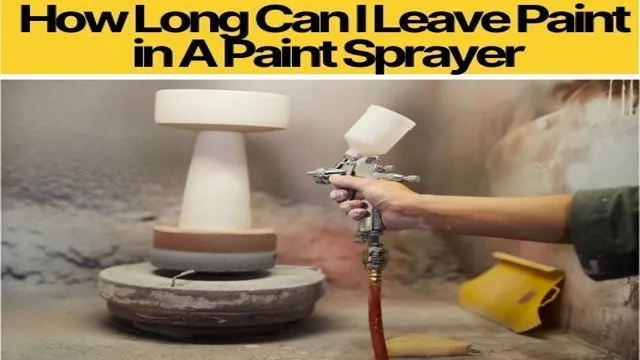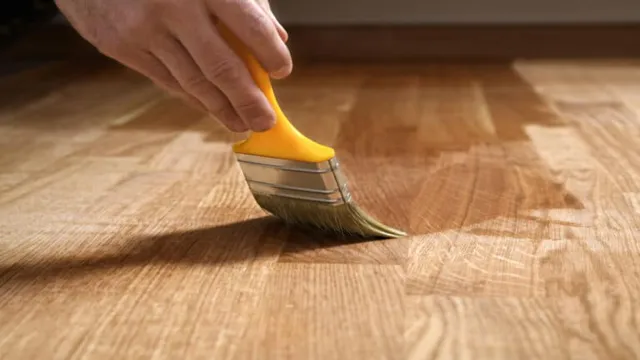How to Joint Long Boards: Tips and Techniques for Perfectly Aligned Wood Joints
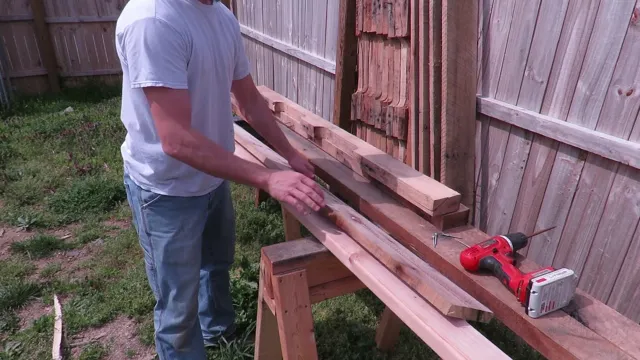
Looking to create a long board for your next project? Jointing long boards can seem intimidating, but it doesn’t have to be. With the right tools, techniques, and a bit of patience, you can create a beautiful joint that seamlessly connects two or more boards together. In this blog post, we’ll provide you with tips and tricks on how to joint long boards, including the different types of joints you can use and step-by-step instructions on how to create a smooth and solid joint.
So let’s get started and create the perfect board for your next project!
Tools Needed
When it comes to joining long boards, there are a few essential tools that you’ll need to ensure accurate and precise results. Firstly, you’ll need a reliable jointer. This tool is used to create a straight and flat edge on your boards, which is essential for a good joint.
You’ll also need a planer to ensure that the thickness of each board matches. This tool will help to create a smooth surface, which is critical for a seamless joint. Another important tool is a table saw.
This tool is used to trim the ends of each board, making them square and uniform in length. Finally, you’ll also need a good wood glue, clamps, and a stock supply to attach the boards together. With these essential tools in hand, you’ll be well on your way to creating a professional-looking joint for your long boards.
Remember to take your time, measure twice, and work with care to achieve the best results.
Circular Saw or Table Saw
When it comes to woodworking, having the right tools is essential to getting the job done right. Two of the most popular saws used for woodworking are the circular saw and the table saw. While both have their advantages, which one is best for you depends on the type of project you’re working on and your personal preferences.
If you are looking for a saw that is lightweight and portable, the circular saw is a great option. It is ideal for cutting large sheets of wood and making long, straight cuts. Additionally, circular saws are versatile and can be used for various types of materials, including wood, metal, and plastic.
On the other hand, if you are working on a project that requires precision and accuracy, the table saw is a better choice. It is perfect for making precise cuts, especially for angled cuts and crosscuts, and is excellent for cutting thicker materials such as hardwood. Ultimately, both saws are valuable tools to have in any woodworker’s arsenal.
If you have the budget and space, consider investing in both a circular saw and a table saw to give yourself the flexibility to complete a variety of projects. Always remember to prioritize safety when using any power tool.
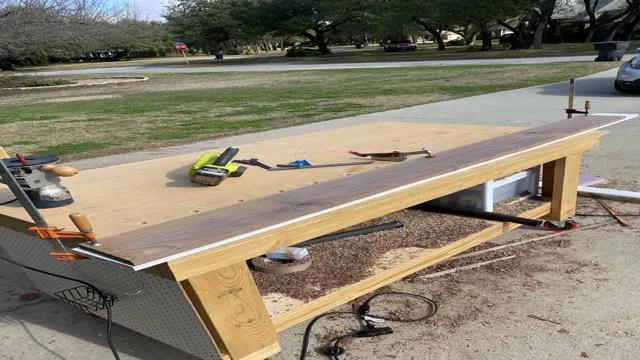
Jointer or Planer
When it comes to woodworking, having the right tools is crucial to producing quality results. Two important tools to consider are the jointer and planer. The jointer is designed to straighten and square up boards, while the planer is used to create a consistent thickness throughout a board.
If you’re a beginner, it may be confusing to determine which tool you need for your project. Both tools have their advantages, and it ultimately depends on what you’re trying to accomplish. The jointer is great for preparing boards for glue-ups, as well as creating flat surfaces on rough lumber.
On the other hand, the planer is ideal for thicknessing boards to a consistent thickness. If you’re only looking to perform one of these functions, then it may be best to invest in the tool that is dedicated to that task. However, if you’re looking to complete more complex projects that require both functions, then it may be worth investing in both tools.
Overall, choosing between the jointer and the planer depends on your individual needs and the specific project you’re working on.
Biscuit Joiner or Pocket Hole Jig
When it comes to woodworking, having the right tools can make all the difference. Two common tools used in joining wood pieces are biscuit joiners and pocket hole jigs. Both have their advantages and disadvantages and can be used for different situations.
A biscuit joiner is a tool that cuts an oval-shaped hole called a biscuit into the wood, which is then glued together with other wood pieces using the biscuit as a connector. On the other hand, a pocket hole jig creates a screw hole at an angle that allows the user to connect two wood pieces together with a screw. If you’re wondering which tool to use, it depends on the project you have in mind.
Biscuits are great for aligning wood pieces and distributing glue evenly. Pocket hole jigs, on the other hand, are perfect for creating a strong joint that can be disassembled if needed. Both tools can be used for furniture building, cabinet making, and other projects that require sturdy joints.
However, if you’re looking for a quick and easy solution, the pocket hole jig might be the better option, while the biscuit joiner is more precise and provides a stronger joint. Ultimately, it all comes down to personal preference and the specific needs of your woodworking project.
Preparing the Boards
When starting a woodworking project that requires long boards, it’s important to first prepare them by jointing them. Jointing simply means creating a completely straight, flat edge that can be used to create a seam when joining two boards together. To joint long boards, you’ll need a jointer or a router with a straight bit.
Begin by marking the edges of the boards with a pencil, being sure to mark both the front and back edges for consistency. Then, run each board through the jointer or router, making sure to keep pressure on the board to keep it level. Continue jointing each board until you have straight, flat edges on each one.
Once this step is complete, you can move on to gluing and clamping the boards together to create a solid, seamless join. Remember, taking the time to properly joint your boards will result in a much more professional-looking and stable finished product.
Measure and Mark
When preparing a woodworking project, one of the first steps is to measure and mark the boards that you will be using. This is essential in ensuring that the boards are cut to the correct size and shape. Before starting, it’s important to have a clear plan of the project and the measurements that you need.
You’ll need to measure each board carefully, being precise with your measurements to avoid any mistakes. Once you have your measurements, it’s time to mark the boards, indicating where they need to be cut or drilled. This is often done using a pencil or marking knife, creating a clear guide for your saw or drill.
Taking the time to accurately measure and mark your boards will help to ensure that your project turns out as you intended, without any unnecessary mistakes or errors.
Cut to Length
When it comes to a DIY project involving wood, it’s important to start with properly prepared boards. One of the first steps in any project is to cut the boards to the appropriate length. This task can seem daunting, especially if you don’t have access to professional-grade equipment.
However, with a few key tools and some patience, you can do it yourself at home. Start by measuring the length of the board you need and make your markings with a pencil or marker. A circular saw is a good tool to use for making straight, clean cuts.
Be sure to clamp the board securely to your work surface to avoid it shifting during the cut. Take your time and use a smooth, steady motion to guide the saw through the wood. With practice, you’ll be cutting boards like a pro in no time!
Joint One Edge
When it comes to woodworking projects, one of the essential steps is preparing the boards. Jointing is the process of making two or more sides of a board perfectly flat and square. Jointing one edge involves using a jointer or a hand plane to ensure that one of the board’s long edges is perfectly straight and square.
This step is crucial as having at least one straight, squared edge makes the next step of ripping the board much more manageable. The jointing process may seem tedious to some, but taking the time to prepare the boards properly will make for more accurate and professional-looking projects in the end. Using a jointer or hand plane to joint one edge will remove any imperfections, knots, or warps, making the boards square and ready to use.
By taking the necessary time and care to properly joint one edge, the final project will look polished and well-crafted.
Joining the Boards
Have you ever wanted to join long boards together to make one longer piece? It can seem like a daunting task, but with the right tools and techniques, it can be done quite easily. First, take a good look at the boards you plan to join. Make sure the edges are straight and flat, and that there are no gaps or bumps.
Then, use a biscuit joiner or doweling jig to mark and cut mating slots in each board. Apply glue inside the slots, and insert biscuits or dowels into one board, then slide the other board onto the exposed biscuits or dowels. Clamp the two boards together tightly and let them dry for the recommended amount of time.
Once the glue has dried, use a hand plane or belt sander to even out any unevenness or rough spots on the joint. With a little patience and the right tools, you’ll be able to join long boards together like a pro!
Glue and Clamp Method
The glue and clamp method is a reliable and simple way to join multiple boards together, ensuring strength and durability. This process involves applying glue in between the boards’ edges, and then clamping them tightly together until the glue dries. It is important to ensure that the boards are perfectly aligned before clamping, as this can impact the overall finish of the project.
This method also allows for flexibility, as it can easily be adjusted to accommodate various board sizes and shapes. In addition, it can be used for a range of woodworking projects, from bookshelves to tables to cabinets. With the glue and clamp method, you can create a seamless and solid outcome that will stand the test of time.
Biscuit or Pocket Hole Method
If you’re looking to join boards together, you may have heard of either the biscuit or pocket hole method. Both techniques offer strong and reliable results, so it ultimately comes down to personal preference and the project you’re working on. The biscuit method involves using an oval-shaped wooden ‘biscuit’ that fits into slots cut into the boards.
This helps to align the boards and create a strong bond when glue is applied. This method is ideal for pieces that don’t require a lot of stress or weight. On the other hand, the pocket hole method uses angled holes drilled into one of the boards, which are then joined to the other board using screws.
This method is great for heavier weight items and makes it easy to assemble pieces that need to be disassembled later. Both methods have their pros and cons, but the important thing is to choose the one that will best suit your needs. Whether you opt for the biscuit or pocket hole method, make sure to take the time to carefully plan your project and follow all safety precautions.
With the right technique and attention to detail, you can create a strong and lasting bond between your boards.
Repeat for Other Edge
Now that one edge of the boards has been joined, it’s time to repeat the process for the other side. Make sure the boards are snugly in place and apply the wood glue along the second edge, just as you did for the first. Once again, clamp the boards together, being careful to align them properly and make sure they don’t shift or move while the glue dries.
Remember that the second edge needs to be just as flush and level as the first, so take your time and make any adjustments necessary. Once the glue has dried completely, remove the clamps and sand any rough or uneven spots so that the joint is smooth and seamless. Congratulations, you’ve successfully joined your boards and created a strong and sturdy piece of woodwork!
Sand and Finish
One of the essential steps in the sand and finish process is jointing long boards. If your long boards aren’t jointed correctly, you’ll end up with uneven floors. Jointing long boards basically means aligning the boards with each other and removing any irregularities or bowing on the edges.
To do this, first, you’ll need a jointer, which is a tool used to smooth a board’s edge and make it flat. You start by adjusting the jointer’s fence, then pushing the board through the machine. Repeat this process until all the boards are smoothed.
Next, fit the boards to each other’s edges and check for any gaps or irregularities. If necessary, run them through the jointer again or use a hand plane to remove any inconsistencies. Once you’ve achieved a tight, gap-free fit, you’re ready to move onto the next step in finishing your hardwood floors.
Remember, jointing long boards is an essential part of the process of achieving smoothly finished hardwood floors.
Remove Excess Glue
When it comes to woodworking, sanding and finishing are two crucial steps that can make or break the final product. But before these steps can even be started, it’s important to ensure there is no excess glue leftover from the joining process. Excess glue can cause issues with smooth sanding and may also interfere with the absorption of wood stains and finishes.
To remove excess glue, wait for it to dry completely and then use a chisel or scraper to carefully remove any visible residue. Be sure to work slowly and cautiously to avoid damaging the wood. Once all excess glue has been removed, proceed with sanding and finishing as desired using a quality sandpaper and a high-quality wood stain or finish.
By taking these steps, you’ll ensure a smooth and beautiful end result for your woodworking project.
Sand Smooth
If you’re looking to achieve a beautiful and smooth finish for your wooden floors, sanding and finishing may be just what you need. Sanding involves removing the old finish and any imperfections on the surface of the wood. This can be done with a special machine that uses sandpaper to smooth out the surface, or manually using sandpaper and elbow grease.
Once the surface is smooth, it’s ready for finishing. There are many options for finishing your wooden floors, including staining, varnishing, or oiling, each with its own benefits. Staining can add color to the wood and enhance its natural grain, while varnishing provides a hard, protective layer.
Oil finishes can give the wood a natural, matte appearance and help to protect it from moisture. Whichever method you choose, the end result will be a beautiful, long-lasting finish that will make your floors look like new again. So if you’re looking to breathe new life into your wooden floors, consider sanding and finishing for a stunning transformation.
Apply Finish
After completing the sanding process, applying the finish is the next crucial step in achieving a smooth and beautiful surface for your wood project. Choosing the right type of finish can be overwhelming as different finishes offer unique attributes, but the most common ones are oil-based, water-based, and lacquer-based. Oil-based finishes provide depth and richness to the wood but take longer to dry, while water-based finishes dry quickly and with less odor but tend to raise the grain of the wood.
Lacquer-based finishes offer the fastest drying time and excellent durability but require specialized equipment for application. Regardless of the type of finish, applying it correctly is essential to get a flawless result. Applying thin coats and allowing sufficient drying time between each coat is crucial to prevent marring the surface by sanding between coats.
Using a high-quality brush or spray equipment will also help in achieving an even finish. Remember, finishes protect the wood from moisture, stains, and scratches, so choose the one that suits your project and experience level, and enjoy the stunning results.
Conclusion
In conclusion, jointing long boards may seem like a daunting task, but with the right tools, techniques, and a bit of patience, it can be easily accomplished. Remember to start with a flat reference surface, take light passes, and keep the boards firmly secured to prevent any unwanted movement. And if all else fails, just remember the wise advice of a carpenter friend of mine: measure twice, cut once, and then blame your tools.
Happy jointing!”
FAQs
What tools do I need to join long boards?
To join long boards, you will need a table saw, a jointer, a planer, clamps, glue, and possibly a biscuit joiner or pocket hole jig.
Can I join long boards without a jointer?
Yes, you can use a table saw or a hand plane to create a straight edge that can then be glued together with another board to make a longer piece.
What is the difference between a butt joint and a tongue and groove joint for joining long boards?
A butt joint is simply two boards being glued together with a straight edge, while a tongue and groove joint has a groove cut into one board that fits snugly onto the tongue of the other board.
Is wood glue strong enough to join long boards together?
Yes, when used correctly, wood glue can create a very strong bond between long boards.
How do I ensure my long board joining project is flat and level?
Before gluing the boards together, make sure they are properly jointed and planed to create a flat, level surface. You can also use clamps and cauls to ensure the boards stay flat while the glue dries.
What is the best type of wood to use for joining long boards together?
The best type of wood will depend on the project and personal preference. Common options include hardwoods like oak or maple, or softwoods like pine or cedar.
Can I join long boards if I don’t have a large enough work space?
Yes, you can use a scarf joint where the ends of the boards are cut at an angle and then fit together to create a longer, more narrow joint.

